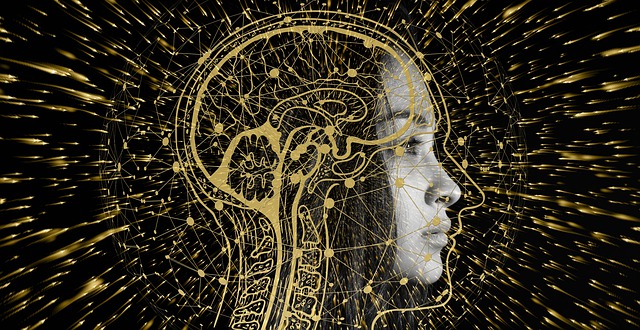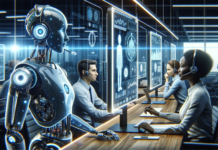Artificial neural networks (ANNs) are a type of machine learning algorithm inspired by the structure and function of the human brain. They consist of layers of interconnected “neurons,” which process and transmit information.
Each neuron receives input from other neurons and uses that input to compute and output a signal to other neurons in the next layer. The output of the final layer is the output of the neural network as a whole.
The weights of the connections between neurons are adjusted during the training process, allowing the network to learn to recognize patterns and make decisions based on the input it receives.
ANNs are often used for tasks that require pattern recognition, such as image and speech recognition, and they have been successful in a wide range of applications. However, they can be computationally intensive and require large amounts of data to be trained effectively.
There are many different types of ANNs, including feedforward neural networks, convolutional neural networks, and recurrent neural networks. Each type is suited to different types of tasks and has its own unique characteristics and capabilities.
There are three main types of layers in an ANN:
- Input layer: This is the first layer in the network, and it receives input data that is fed into the network. The input layer does not perform any computation, but simply passes the data on to the next layer.
- Hidden layer: These layers are located between the input and output layers, and they perform the majority of the computation in the network. Each hidden layer receives inputs from the previous layer, processes them using weights and biases, and passes the results on to the next layer.
- Output layer: This is the last layer in the network, and it produces the final output of the network. The output layer receives inputs from the previous layer, processes them using weights and biases, and produces the final output of the network.
In a multi-layered ANN, there can be any number of hidden layers, depending on the complexity of the problem being solved. The more hidden layers there are, the more powerful the network becomes, but this also makes the network more computationally expensive to train and use.
There are several types of artificial neural networks (ANNs), including:
- Feedforward neural networks: These are the most basic type of ANNs. They consist of an input layer, one or more hidden layers, and an output layer. The input layer receives the input data, and each subsequent layer processes the data and passes it on to the next layer. The output layer produces the final output of the network.
- Convolutional neural networks (CNNs): These are ANNs that are particularly well suited for processing data with a grid-like structure, such as images. They are made up of multiple layers of interconnected neurons, with each layer performing a different operation on the data. CNNs are often used for tasks such as image classification, object detection, and segmentation.
- Recurrent neural networks (RNNs): These are ANNs that are designed to process sequential data, such as time series or natural language. They have a feedback loop that allows them to retain information from previous time steps, allowing them to make predictions based on past events. RNNs are often used for tasks such as language translation, speech recognition, and natural language processing.
- Autoencoders: These are ANNs that are used for dimensionality reduction and feature learning. They consist of an encoder and a decoder, which work together to learn a compact representation of the input data. Autoencoders can be used for tasks such as data denoising, anomaly detection, and feature extraction.
- Generative adversarial networks (GANs): These are ANNs that are used to generate synthetic data that is similar to a given dataset. They consist of two networks: a generator network that generates synthetic data, and a discriminator network that tries to distinguish between real and synthetic data. GANs are often used for tasks such as image generation and style transfer.
ANNs are used as a part of deep learning, a subfield of machine learning that is inspired by the structure and function of the human brain. Deep Learning involves training artificial neural networks (ANNs) on a large dataset, allowing the network to learn and improve its performance over time.
So how can we use an ANN in real life? Chances are you are already using ANNs daily whe. you hold a phone and unlock it with your Face ID or if you search something online on a search engine, ANNs are widely being used to predict and search images.
Here are top 7 used cases of ANNs:
- Image recognition: ANNs can be trained to recognize objects, people, and scenes in images and videos. They are used in a variety of applications, such as security systems, self-driving cars, and medical imaging.
- Natural language processing: ANNs can be used to understand and generate human language, allowing them to perform tasks such as language translation and text generation.
- Speech recognition: ANNs can be used to recognize and transcribe speech, allowing them to be used in voice-based assistants like Siri and Alexa.
- Predictive modeling: ANNs can be used to make predictions about future events based on past data, such as stock prices or weather patterns.
- Fraud detection: ANNs can be used to detect fraudulent activity by analyzing patterns in data, such as credit card transactions or insurance claims.
- Healthcare: ANNs can be used to analyze medical images and make diagnoses, or to predict patient outcomes and suggest treatment plans.
- Recommendation systems: ANNs can be used to recommend products or content to users based on their past behavior and preferences.
These are just a few examples of the many real-life applications of ANNs. As the field of artificial intelligence continues to advance, it is likely that ANNs will be used in an even wider range of applications. But will they be able to replace, understand or predict human emotions, only time will tell.











